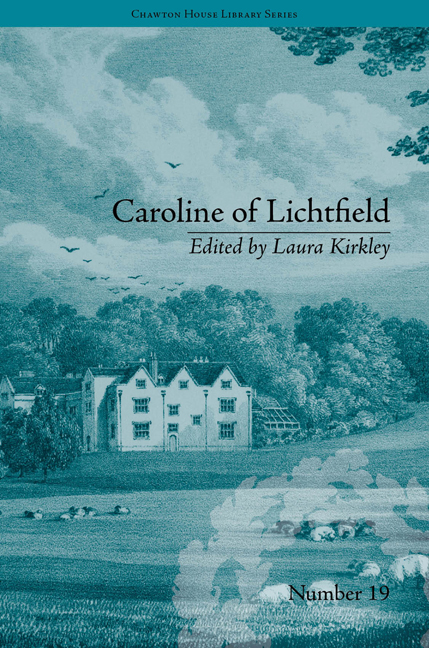Introduction
Summary
An international bestseller in its heyday, Caroline of Lichtfield (1786) is the site of a unique textual encounter between the Swiss author of the source text, Isabelle de Montolieu, and the English translator, Thomas Holcroft. At first glance, this encounter seems an improbable one. Apart from the fact that Montolieu wrote for profit, the patchy biographical information available to us suggests that she lived her life in relative privilege, a model of conventional womanhood. By contrast, Holcroft was ‘sprung from the people’,1 a working-class political radical who, in 1794, was indicted on insubstantial charges of high treason. As this thumbnail sketch might suggest, his novels tend to be morally didactic or politically utopian; Anna St Ives (1792) is often called the first Revolutionary novel. Holcroft's corpus might seem strangely incompatible, then, with Caroline de Lichtfield, ou Mémoires d'une famille prussienne (1786), a light-hearted novel of sentiment that draws liberally on anti-mimetic genres such as heroic romance, pastoral and even fairytale. Furthermore, although no record of Montolieu's political views survives, Valérie Cossy observes that she often partook in a Swiss ‘helvetist’ rhetoric that was ‘intrinsically reactionary’. Why, then, did Holcroft single out Caroline de Lichtfield, the only novel he would ever translate, and one of very few translations he made from female-authored source texts? A closer examination of the respective cultural contexts of Holcroft and Montolieu will offer some answers to that question; more convincing ones, however, can be found in the text of the novel itself.
At first glance, Caroline epitomises a literary vogue for ardent sentiment which, while it endured into the nineteenth century on the European continent, in Britain degenerated into pastiche or darkened into Gothic melodrama. This might explain a tendency, amongst modern critics, to dismiss Montolieu as a populist writer who dealt in what are now clichéd sentimental conventions. Isabelle Bour, for instance, describes Caroline as ‘featuring the most outrageous characteristics of sensibility – hyperbolic sentiment, extreme pathos, implausible situations, impossible dilemmas.’ And yet the overwhelmingly positive response of eighteenth-century readers and reviewers invites closer scrutiny of Caroline as an influential work of literature.
- Type
- Chapter
- Information
- Caroline of Lichtfieldby Isabelle de Montolieu, pp. xi - xxiiPublisher: Pickering & ChattoFirst published in: 2014



